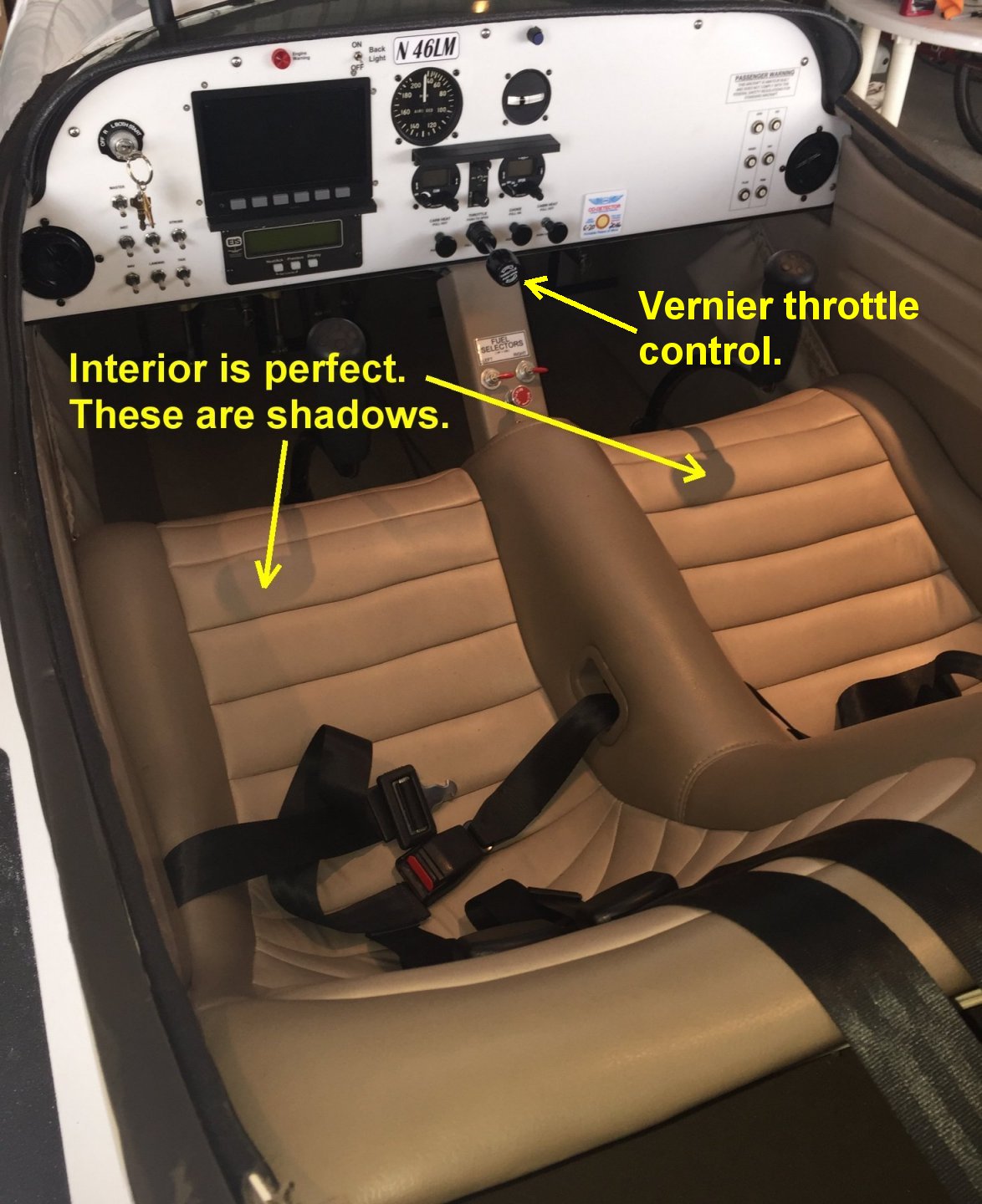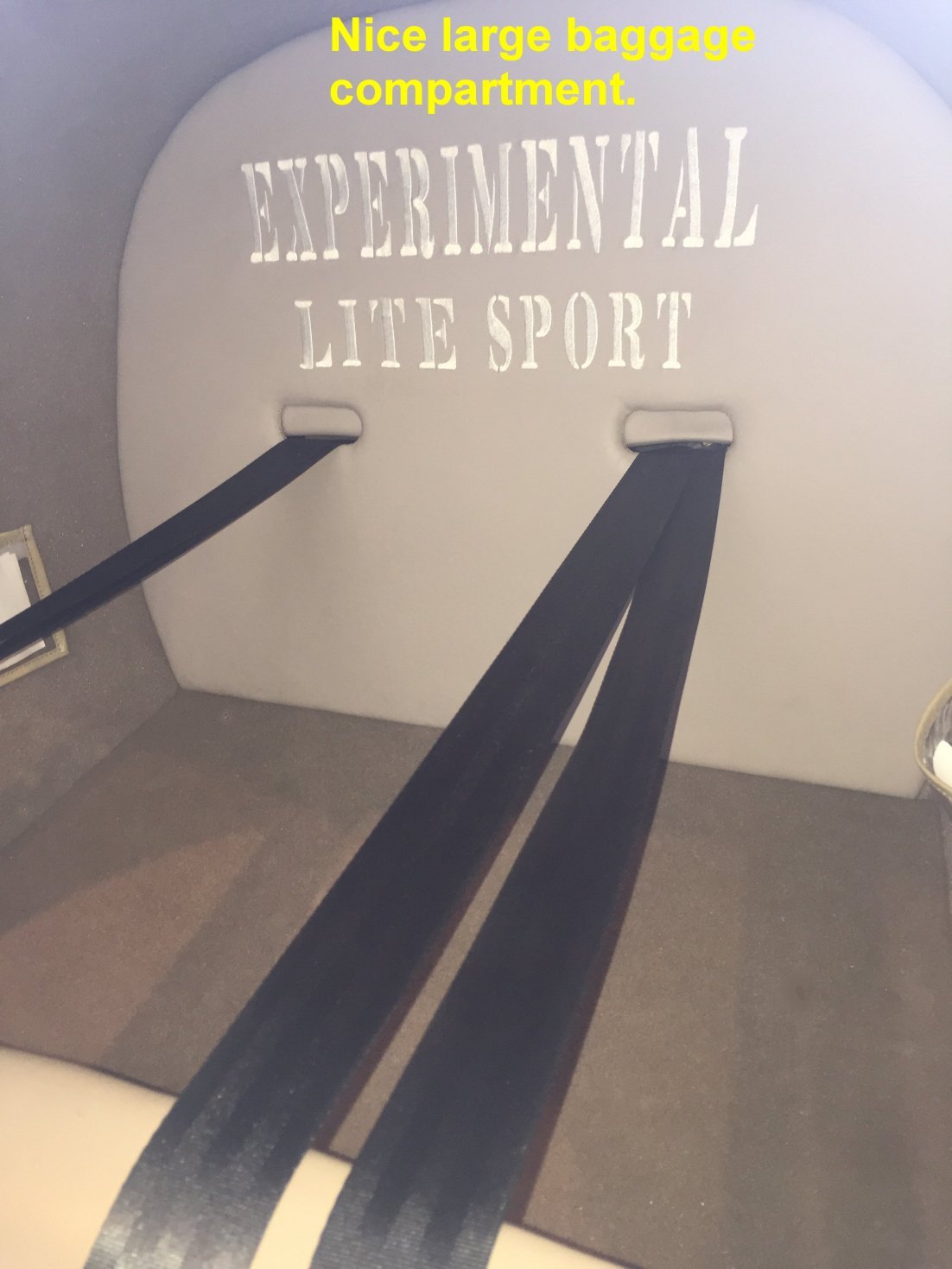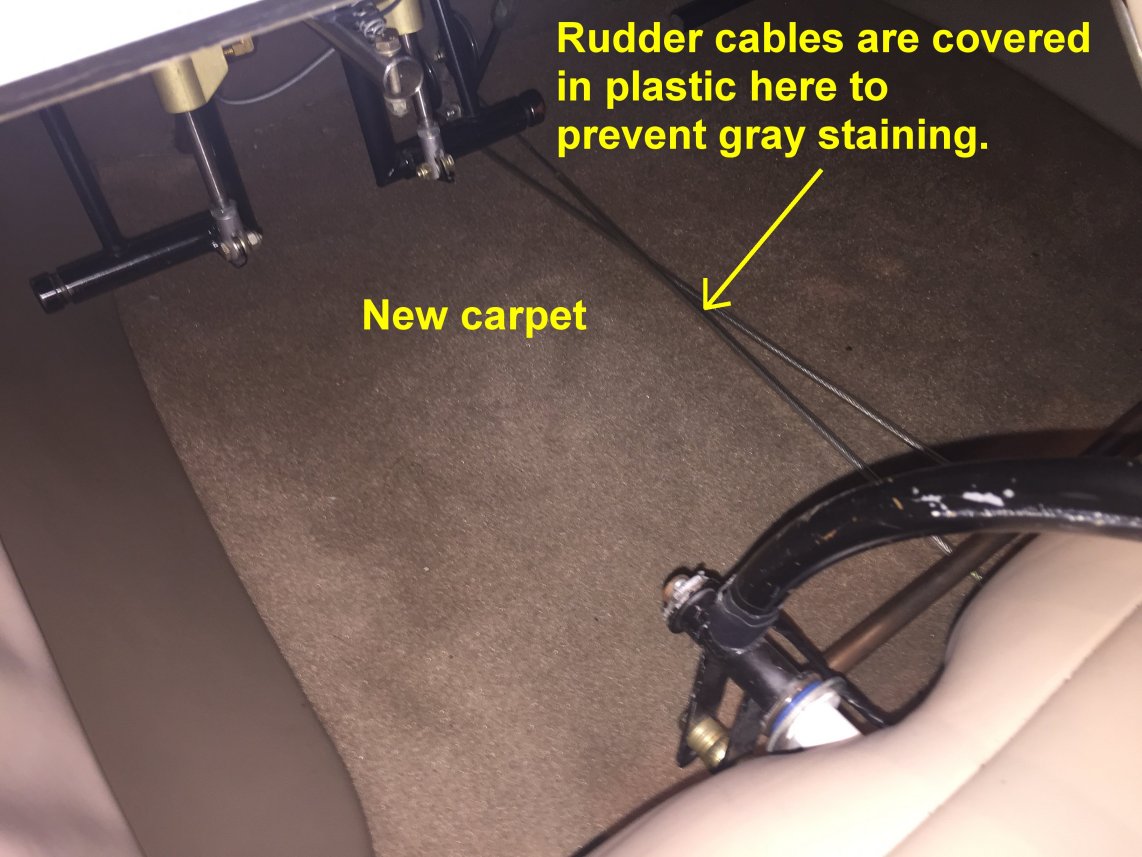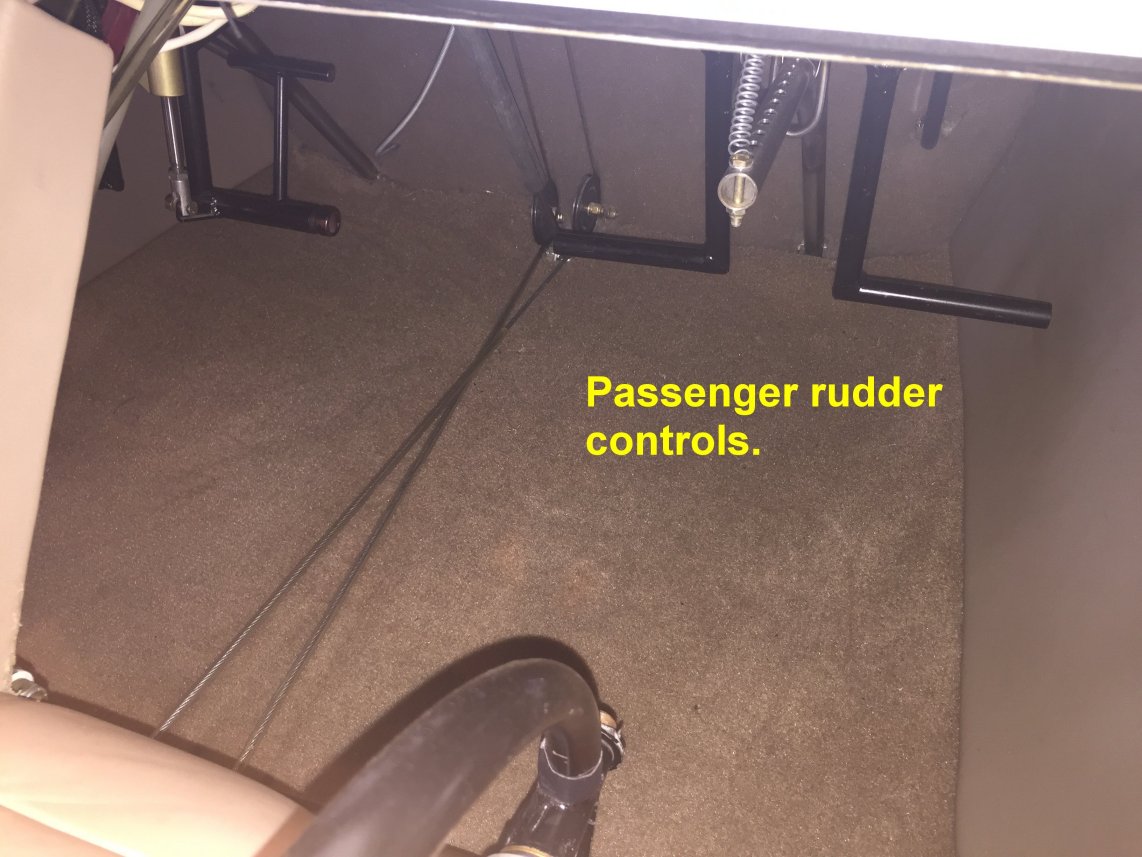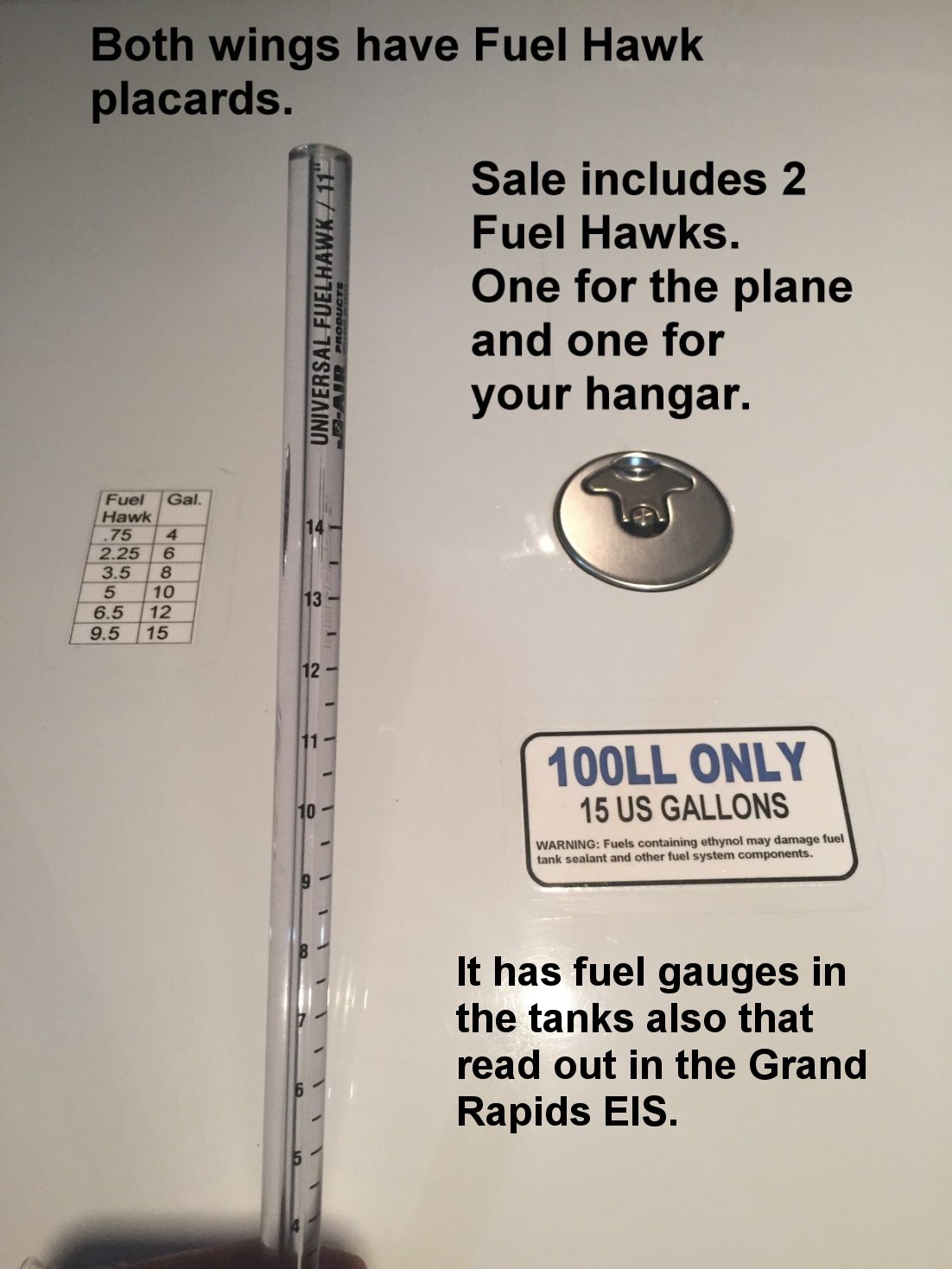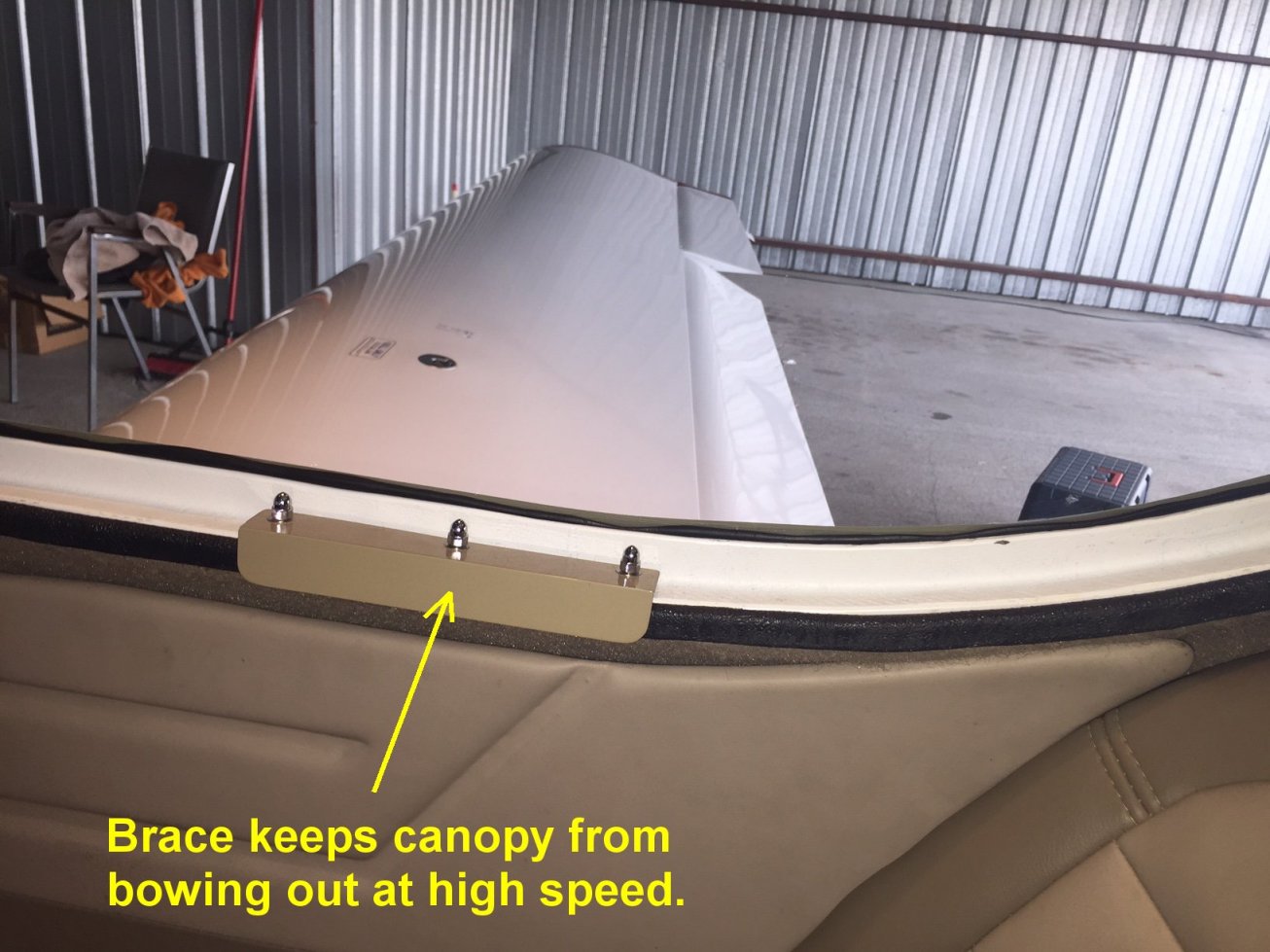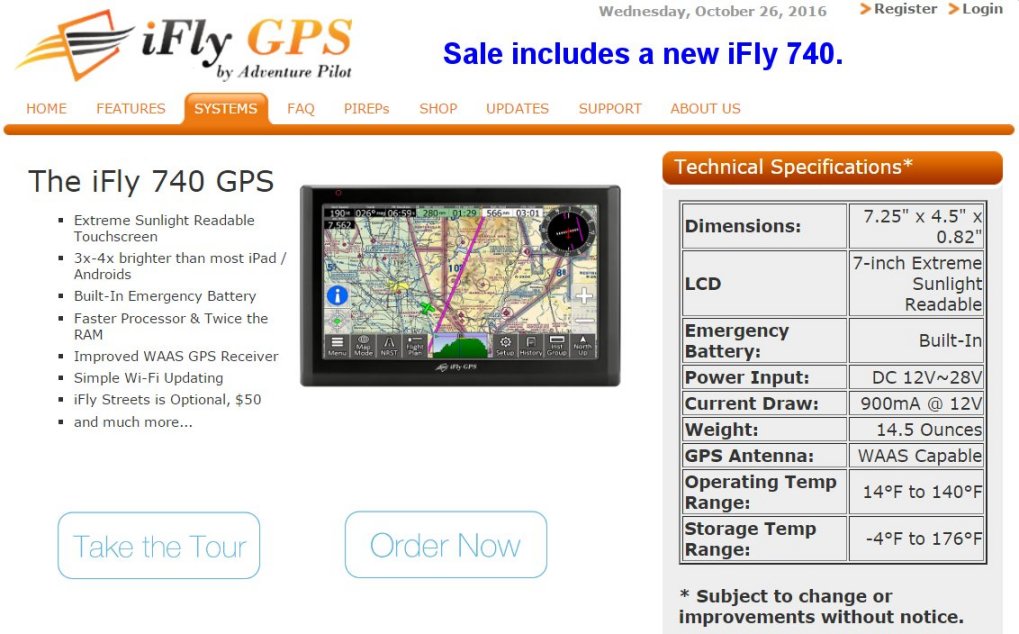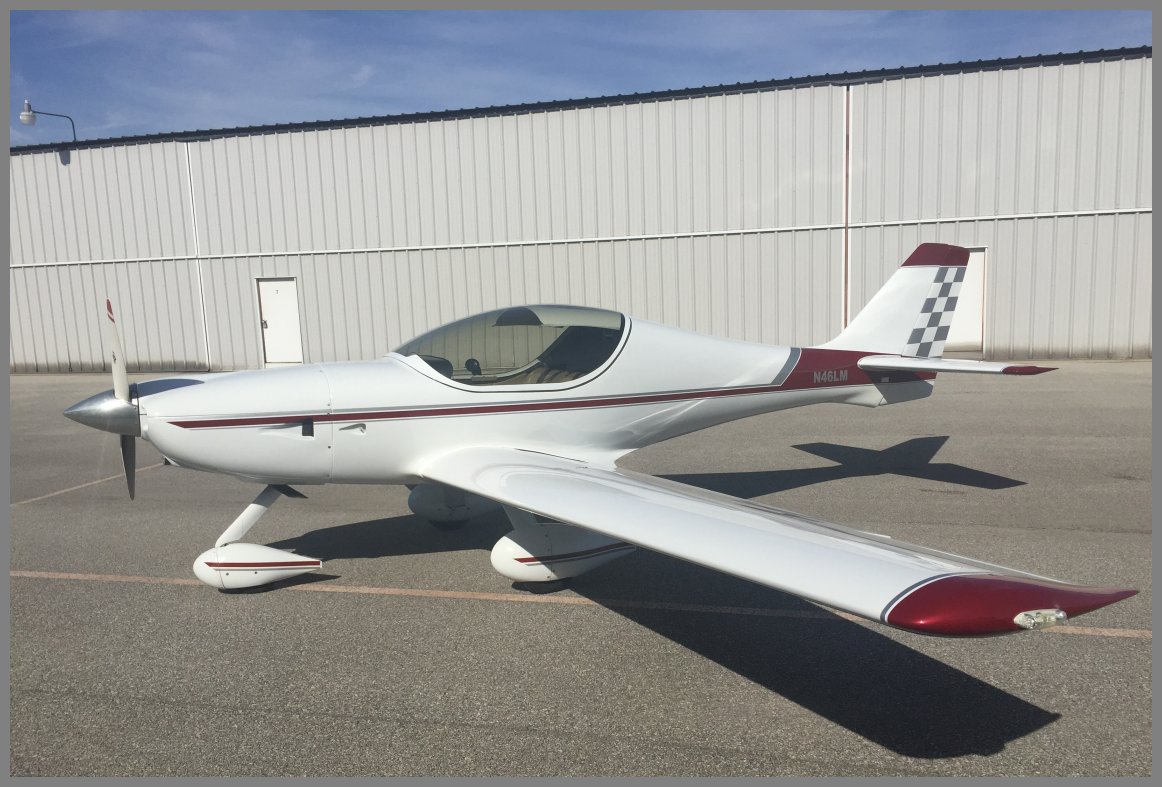

|
Welcome to my N46LM Page My phone: 317-413-4756 Email: jchasteen@hitecindustries.com Here is my page on my VM-1 Lightning. N46LM was built by Larry Mitchell at the factory in Shelbyville Tennessee as part of their factory-assist program. She was built and registered in 2007 as Experimental - Amateur Built (EAB) but she meets all the requirements to be flown as an Experimental Light Sport (ELSA) aircraft. In other words all you need is a pilots license and a drivers license. There is no requirement to have a medical or jump through the new Medical Reform requirements to fly this fast little ship. She easily cruises at the LSA maximum speed of 120 kts (138 mph). This aircraft has not been in any type of accident or incident. The new engine was fitted because of shortcomings of the upper-end lubrication of the early engine design. More on this later down the page. Speed Note: N46LM was registered meeting all the current LSA criteria including gross weight, cruise and stall speeds. In her initial flight tests she was logged as indicating a max cruise airspeed of 120 KT IAS (corrected for sea level of course) at the recommended LSA maximum power setting (not to exceed) cruise power setting of 2850 RPM as specified by the Jabiru factory when installed in an aircraft to be flown by a Light-Sport pilot. However, the Jabiru factory says the 3300 will cruise safely all day long at 3000 RPM. Consequently this airframe will exceed 160 MPH at 3000 RPM at 5000' ASL and even faster down low. All that being said, private pilots with a valid medical could, legally and safely, push the throttle forward to 2950-3000 RPM and handily cruise at 160 MPH or better since this aircraft was registered as EAB (Experimental Amateur Built) and not E-LSA (Experimental Light Sport). So basically it's the pilot who decides if N46LM is LSA or Experimental! See E-LSA compliance documentation for N46LM below. Noteworthy items: The Esqual fuselage makes for a lighter aircraft. I firmly believe the weight has a lot to do with this little planes speed and certainly its climb performance. The empty weight of this plane is only 706 pounds. Many of the latest Arion Lightnings are approaching 900 lb. The LSA gross weight is 1320 lb. 706 pounds leaves 614 lb of useful load. Example; 400 lb for occupants, 180 lb for 30 gallons of 100LL and 34lb of luggage. Of course if your passenger is lighter you can add more luggage. The Cessna 162 LSA cannot carry 2 occupants and full fuel without going over gross. I know I rented one for awhile before N46LM and I met. Aircraft Designation: VM-1 Lightning Hybrid (Arion Lightning 30 gallon 30 foot wing with the original Esqual lightweight fuselage). Engine: 2016 Jabiru 3300 Serial: 33A 2750 120 HP at 3300 RPM. This is the newest design with all the latest updates including roller lifters. There was no prop strike. The early Jabiru engines have upper-end lubrication problems. My original engine had severe wear in the pushrods, rocker arms, rocker arm shafts, etc. Rather than spend all the money to address this I decided repairing it would be a waste of money so I opted for the new power plant. My old engine would still have had all of the older technology in the bottom end also. The newfound power is startling! The improvement in lift off and climb are truly amazing! LSA Compliance: See the LSA Compliance affidavit from the builder here: CLICK HERE. N46LM meets all the FAA LSA regs. See section 4-14 of this Airworthiness Certification of Products and Articles. CLICK HERE. United States - requirementsThe Light Sport Aircraft Rule: The FAA defines a light sport aircraft as an aircraft, other than a helicopter or Powered-Lift that, since its original certification, has continued to meet the following:
Engine: 31 hours TT (as of August 22, 2019) Jabiru 3300 Serial: 33A 2750 120 HP at 3300 RPM. This is the newest 2016 design with all the latest updates including roller lifters. There was no prop strike. The early Jabiru engines have upper-end lubrication problems. The new engine also came with a brand new exhaust system and rubber engine mount bushings. The coils on these engines introduce a ton of radio noise. Jabiru buys a stock Honda small-engine coil. It has a solid core wire which is an absurd thing to do on an airplane with com radios. Many guys, including me, have changed out the coil wires in favor of automotive suppression wires. Then I installed NGK iridium resistor spark plugs. The combination makes for a very clear radio. Before I could barely understand anything from communications much over 5 miles away. At least the plug wires on the new engine are already the automotive suppression type... go figure. Airframe: 224 hours TT (as of August 22, 2019) Completed February 2007. This build has the early lightweight VM-1 (Esqual) fuselage coupled with the updated Lightning wing with 30 foot span with 30 gallons capacity. She has Van's RV pressure recovery wheel pants. The wheel pants on most LSAs introduce as much or more drag than no wheel pants at all. Not the case with Van's. The original brakes for these planes were inadequate so Larry installed Matco brakes right from the start which do a fine job. Main tires are like new. I will provide a new nose tire at the time of sale or next spring when the condition inspection is due. I installed a new battery last year. She has a range at 138 mph of over 750 miles with a half hour of reserve. That's about 28 mpg. How many GA planes can say that... um about none. The Esqual cowling has a nice sized NACA vent on the right side that provides cool and filtered outside combustion air to the engine and pressure to the cabin heat muff. The NACA vent on the left side feeds the oil cooler which is a full-sized unit just like you would see on a Cessna or Mooney. Needless to say the oil stays in the green. I actually have to stuff some foam in the NACA vent on cold days or the oil won't get above 150 degrees. Prop: Sensenich Fixed pitch. It provides great climb performance and when you roll the nose over for cruise she really sizzles through the air. One piece wood core props are safer and more efficient than the ground adjustable ones. If, heaven forbid, a blade departs the hub of a ground adjustable prop you will most likely lose your engine - literally! The imbalance of losing a blade would be so severe that the engine would most probably be shaken from the aircraft leaving you with an airframe with the aerodynamic characteristics of a grand piano. My Defiant actually had safety cables to keep the engines attached to the airplane in the event a blade were to depart unexpectedly. Read the NTSB reports. This does happen with hub style blades (ground adjustable props included). Guys think they will tweak their ground adjustable props for different missions but in reality 99% of them set it once and never touch it again. It is far safer and more efficient to just get the right prop for your engine/airframe combo and live to fly another day. Equipment: Night nav lighting, LED landing light, red panel lighting. iFly 740 GPS with free weather and traffic. Dynon Glass Panel Flight Information System. Grand Rapids Engine Information System (EIS) with oil pressure, oil temp, 6 EGT sensors and the latest screw-in CHT sensors which do not require time consuming removal of spark plug gaskets (which was a big hastle). Hackman leaning system. Vernier throttle which is great for making finite power adjustments. Cabin heat. Two NACA cold air comfort vents. Full-size GA style oil cooler like on a Mooney. Light Speed ANR headset, Halo in-ear headset and canopy cover. K&N reusable high-flow air filter. Cabin heat. Scavenger Effect or Just Voodoo Science: I swear that when I cut the exhaust pipe at the same angle as the bottom of the fuselage to cut drag it also created a scavenger effect which during climb when the open end of the pipe has 100+ KT air blowing past it helps to evacuate exhaust from the exhaust system giving the engine a little more power because I noticed it in higher RPMs and a slightly better climb rate... or at least I should get a prize for the longest run-on sentence! Oh yea, and the engine started running lean in climb so I had to put a bigger main jet in the carb. Maybe it is more than just Voodoo Science after all! My Aviation Habit: My wife and I started in a Grumman Cheetah back in 1991, then I went to a Mooney. I was in a club with a Cessna 310R for awhile then I bought a Rutan Defiant. When I decided to go Light-Sport I bought a Jabiru J250. It was over-propped for cruise and climb was pathetic. After a year and a half I vividly remember going out to the hangar one beautiful sunny day, looked at the Jabiru and said to myself "If this is all that's left in aviation for me then I'm out of here! I sold the J250 and let my hangar go. I rented an Evektor and Cessna 162 (LSA) a few times. One day in the Evektor I was 10 miles out from BMG (Bloomington IN) with a 25 mph headwind when I called the tower. We could clearly see the airport. A few minutes later the tower called "Evektor... are you still out there. I thought we were never going to get to the airport! My lightning would still be making 115 mph over the ground with that headwind. As a matter of fact, with the new engine she will carry me and full tanks up at a rate of 500 fpm and hold 138 mph in cruise climb. That's approaching Mooney climb territory. The Lightning flies more like a regular GA aircraft than any of the LSAs I have flown. As a matter of fact she will smoke a Grumman Cheetah in all categories except for passenger count and do it on a little over 1/2 the 100 LL! I am having second thoughts about giving up on aviation but life changes are setting in. Sadly I must take that flight plan.   |
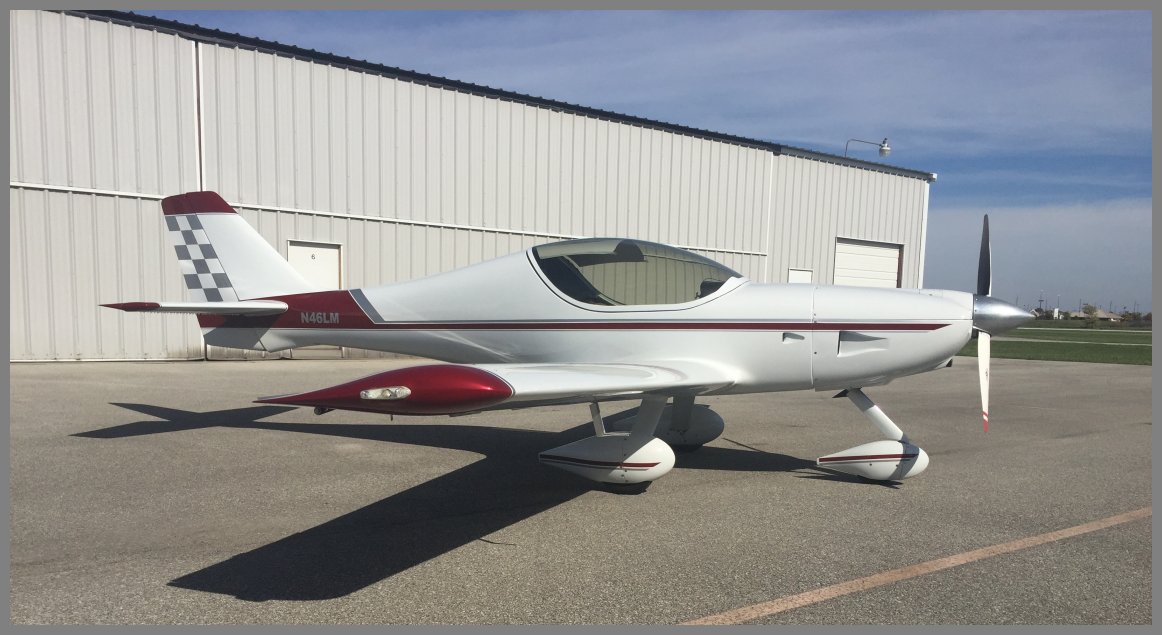
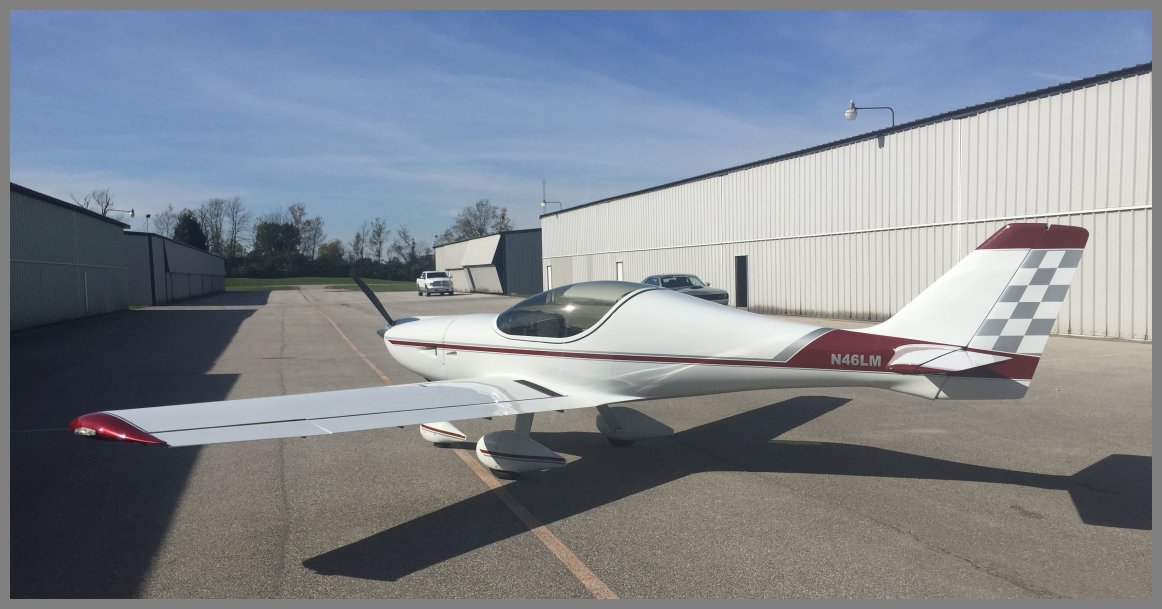

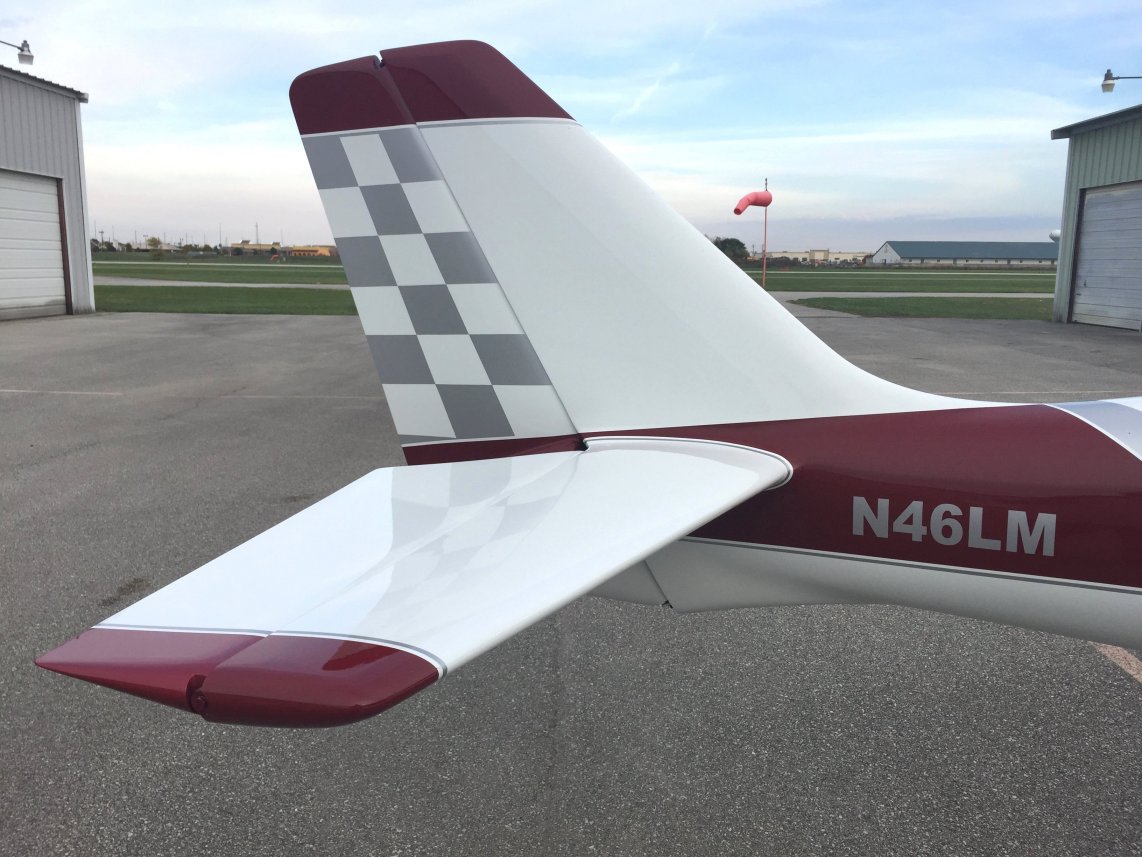
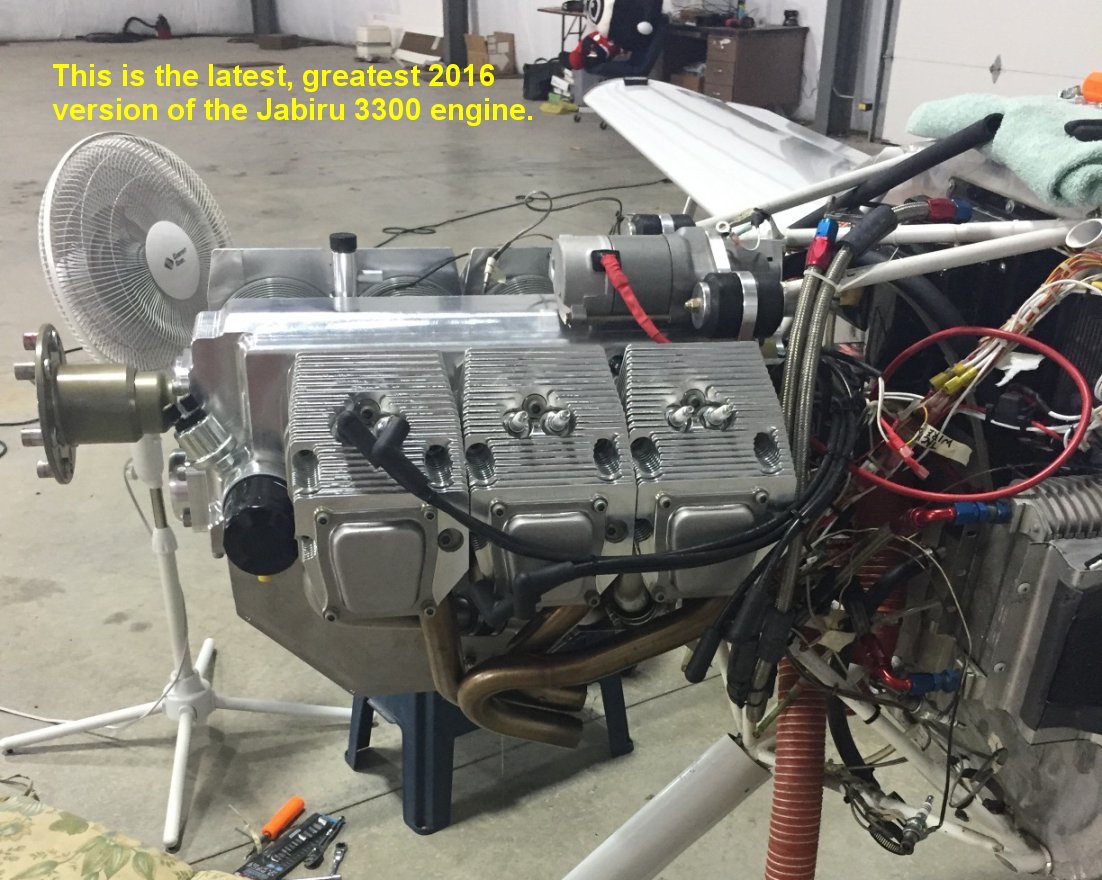

The picture is of a digital prop balancer in flight. It is a smaller and
simpler version of the balancers the prop shops use. The reading of .01 was
taken in cruise at 2850 rpm in smooth air. I temporarily ran the wires
through the cabin heat duct in the firewall for the balancing procedure. It uses
an accelometer on the front of the engine to sense the imbalance and a tach
sensor with target tape on the prop to track RPM and degrees just like the pro
units. Since the Jabiru has a nice exposed flywheel on the back of the engine I
was able to put the target tape there and temporarily mount the tack sensor on
the airbox on the firewall.
Then the takeoffs and landings began. You simply add a few little stainless
washers under the spinner bolts until you get it close. This time it only took 4
tries. The engine was not bad in the first place approx .18. To get to .01 is
almost unheard of so of course I didn't try any further. I ran the "averaging"
mode several times after adding the washers and .05 07 and many times .01
came up. Anything less than .10 is considered great.
Most prop shops simply run the procedure on the ground hoping for adequate
results. The problem is that the imbalance varies at different RPMs. I have
always balanced my props at cruise since you spend the most time there.
As you know s"smoother is better" and I think it adds a little horsepower and
possibly a knot or two during climb and cruise. Certainly it is better for the
airframe.
